
The number of people working from home continues to rise, with smartphones and cloud servers meaning that we can be connected to the office regardless of our location. Working from home has some definite advantages. Most notably there’s no commute, you are in charge of your own time and for parents it offers greater flexibility.
But working from home also has its challenges. The boundaries between work and life disappear making it hard to distinguish between work time and home time and distractions are everywhere. The temptation to catch up on household chores or get a head start on meal prep for the week might mean that you find yourself catching up on your work late into the night when everyone else has gone to bed.
Whether you work from home full-time, occasionally or on weekends, it’s vital that your space is as conducive to productivity as possible. Here are some home office design tips to create the perfect workspace to ensure you stay focused when you need to be, and you can switch off to avoid working more hours than you would in the office.
Make sure your well connected
Good connection to Wifi is a must as you need to be sure you can work efficiently – an unreliable Wifi is going to slow you down. Boosters are a great idea if your connection is poor and if you are planning a refurbishment you could consider having them wired in key locations so you have constant high-speed connection throughout the house.
The same goes for mobile phone signal – not all network providers have equal signal so do your research and make sure that your supplier has a good signal strength in your area. If signal is a problem you can purchase a mobile phone signal booster which will greatly reduce the number of dropped calls.

Create a designated workspace.
Physically leaving the house to go to work means you have a clear boundary between work and home. It also means that you are more likely to be energized and ready for what the day has to offer.
Working from home can make it harder to feel motivated so it’s vital that you create some kind of boundary even if it’s only psychological. Be it a desk in the spare room, or the luxury of your own office – have somewhere to call your own. Mentally this helps you get into work mode when you sit down.
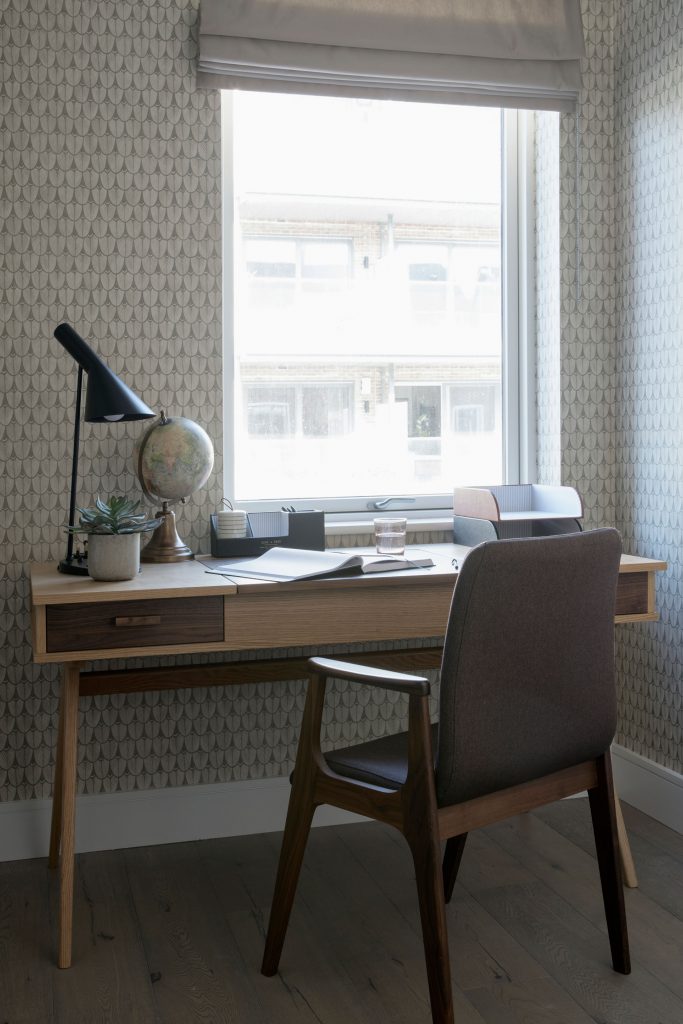
Try to avoid working at your kitchen table. I must admit I’ve been guilty of this myself. It’s much better to create a space that is specifically for work. There are a couple of reasons for this. Not only will your space be more organised but you will also be less likely to slowly chip away at work all day long. By separating your workspace you will create a natural boundary, making it easier to be more disciplined.
Also, try to avoid working from places you choose to unwind in, like the living room or your bedroom. If these spaces are your only option for a workspace it’s important you can create a way of concealing your workspace when it comes to winding down.
Bespoke joinery works really well in these situations, a storage unit with integrated desk that can be closed off when not in use, for example, is ideal. Otherwise the presence of a desk or laptop will act as a constant reminder of what you’re not getting done, making it virtually impossible to switch off.
Take your personality type into account
It’s important to take your personal work style and preferences into account when deciding where you set up your workspace at home. Everyone’s tolerance for distractions is different. Are you the type of person who needs to work in complete silence or do you prefer to feel part of what’s going on around you? It really is a matter of personal preference.
If you’re the kind of person that can turn a blind eye to unfinished chores and don’t mind the sound of the TV while you’re trying to work then a central space like a kitchen or living room might work for you.
If on the other hand, a sink full of dirty dishes or a pile of ironing in plain sight is likely to cause you stress then a spare room or separate home office with peace and quiet might be a better choice.
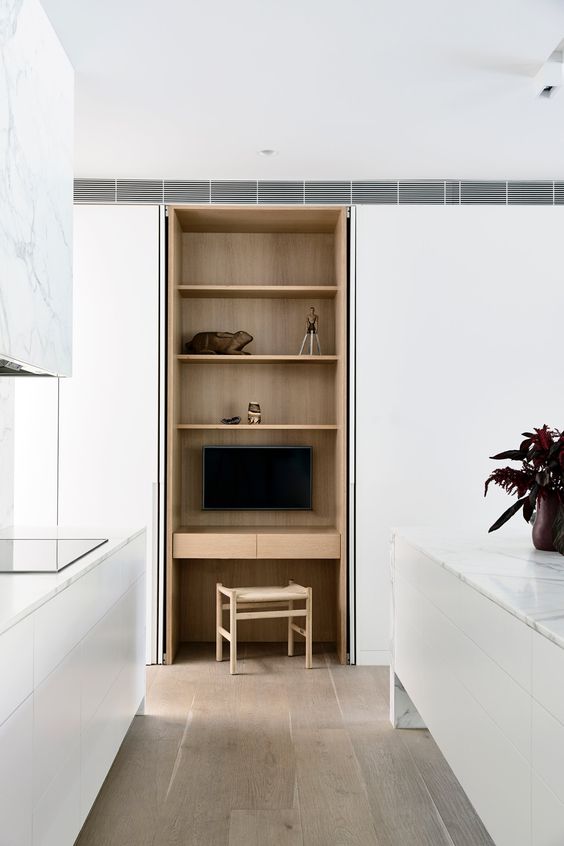
Keep organised
There is nothing more stressful than clutter, so having an organised space is essential, especially where the space needs to multitask. For example, we’ve designed desk areas in open-plan spaces that blend in with the kitchen and can be closed off when not in use. By having a designated space like this means that you can store everything that you need in one place.
Otherwise, you risk wasting time trying to remember where you left something or arguing with family members over essential items not being where you left them. A place for everything and everything in its place is the key to a stress-free and calm working environment.
Invest in good furniture
Another reason your kitchen table isn’t ideal is that the chair and height of your work surface will not be ergonomically correct, meaning over time you may find yourself with new aches and pains.
There are a few guidelines to follow when it comes to posture and ergonomics. Your chair should provide adequate back support to allow you to keep your back and shoulders straight. Your feet should be flat on the floor. Your elbows should be at a 90-degree bend and align with your hands on the keyboard. Your eyes should level with the top third of the screen, and don’t forget to take occasional breaks.
Invest in the best chair you can afford, one with proper lumbar support and armrests is best, also make sure that you can adjust the height of the seat to ensure all of the criteria above are fulfilled.
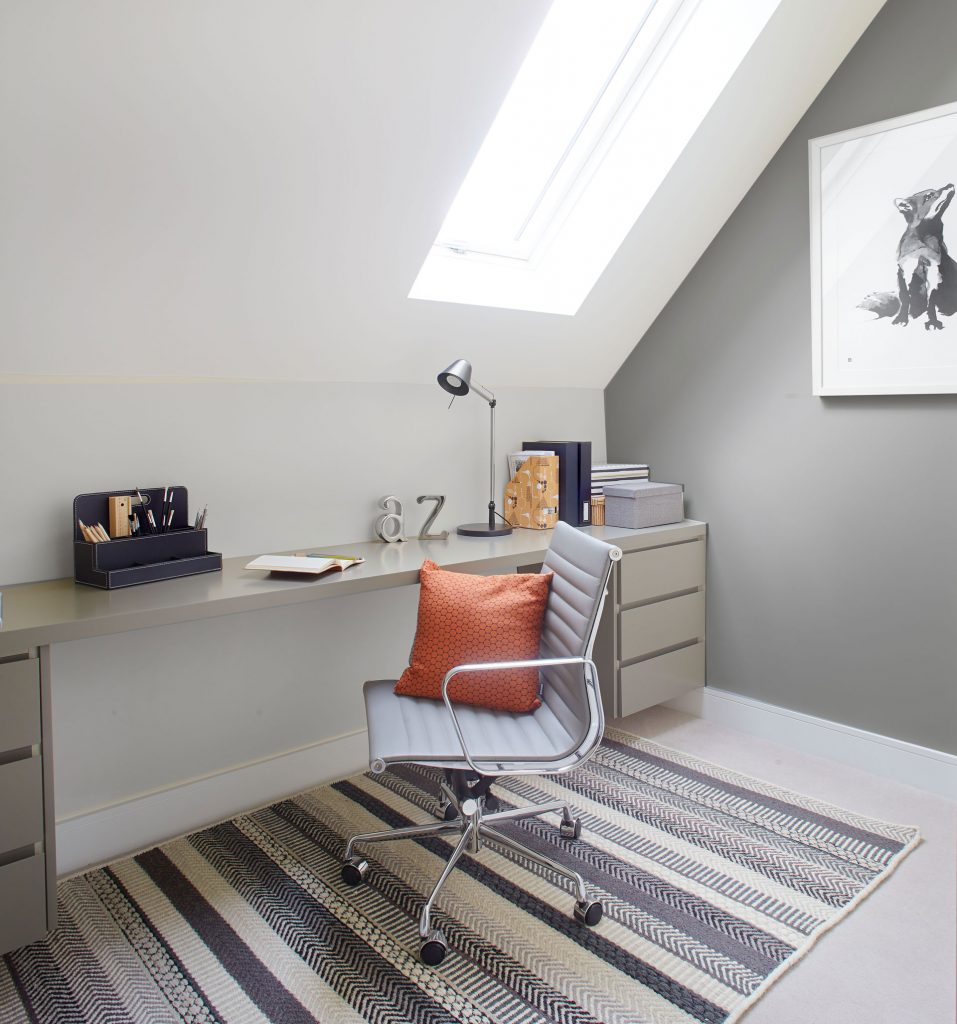
Enjoy the space
Don’t let your home office become the dumping ground for all unwanted furniture and home accessories. This space should be both inspiring as well as functional. I’ve seen rooms that are so full of boxes and general stuff that there is barely space to sit and work. This room should have nothing other than the items that you need to work in it.
Have fun choosing colours and decorating the space to create the kind of environment that you find pleasant to work in. If you like your workspace to feel energising and inspiring, brighter colours work well or if you prefer a calmer and more relaxing space opt for softer warmer shades and a more neutral palette.
There’s nothing more uninspiring than staring at a blank wall. Invest in some art or if the space is lacking in natural light use mirrors to reflect light and make the room feel more spacious. Finally bring in some plants, nothing like a bit of greenery to bring a space to life.
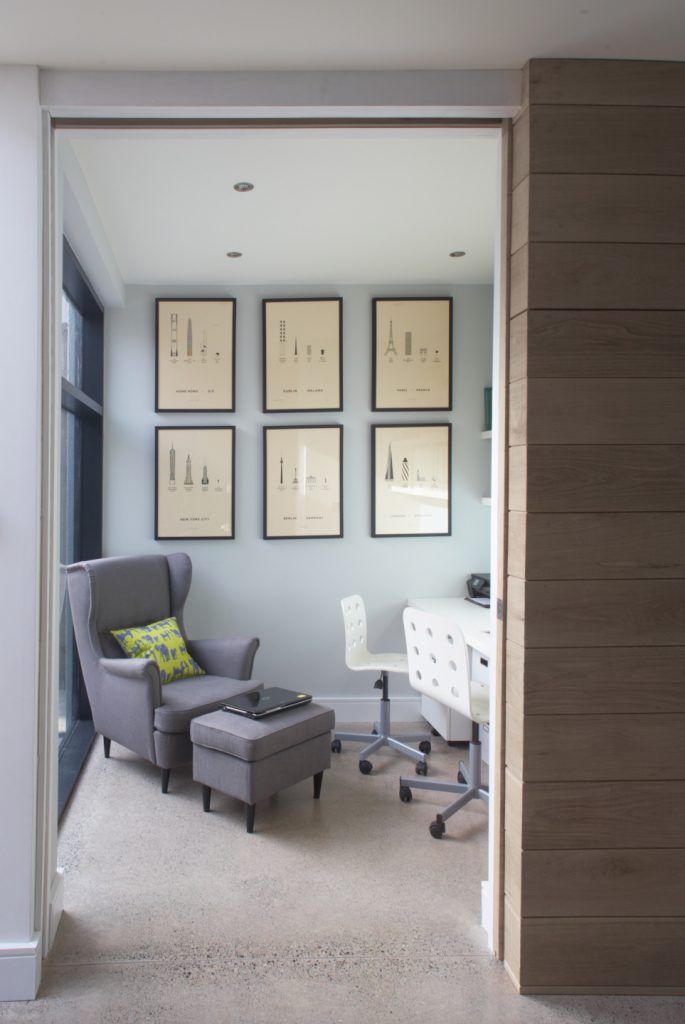
Plan your lighting carefully
When it comes to lighting your space, there are two things to keep in mind. Good task lighting is vital – you need to be able to see what you’re doing so a good table lamp is a priority.
After that, it’s about ambience. It’s critical that your working environment is pleasant to be in, so choose bulbs with warm colour temperature and put overhead lighting on a dimmer if possible so that you can control the lighting levels.
If you are planning on installing any bespoke joinery for storage or shelving, you could also consider adding some cabinet lighting and put this on a separate circuit to the rest of the lighting. This will give you options for controlling the ambience in the room.
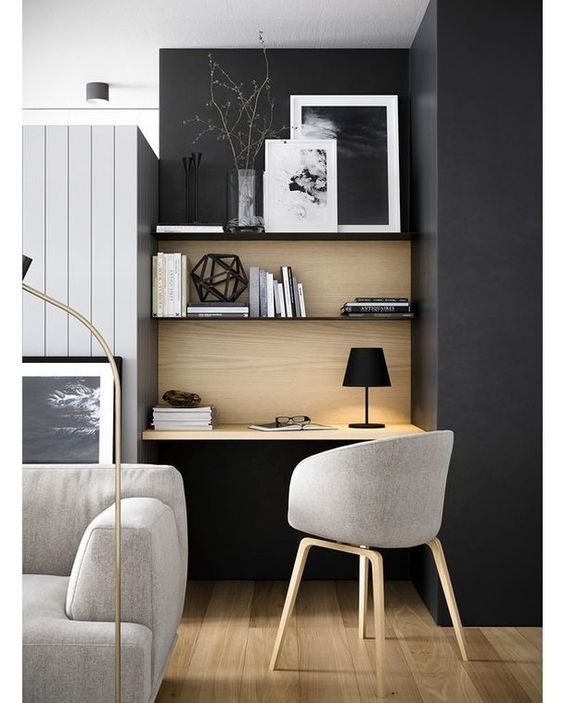
The post Working from Home appeared first on Optimise Design.






